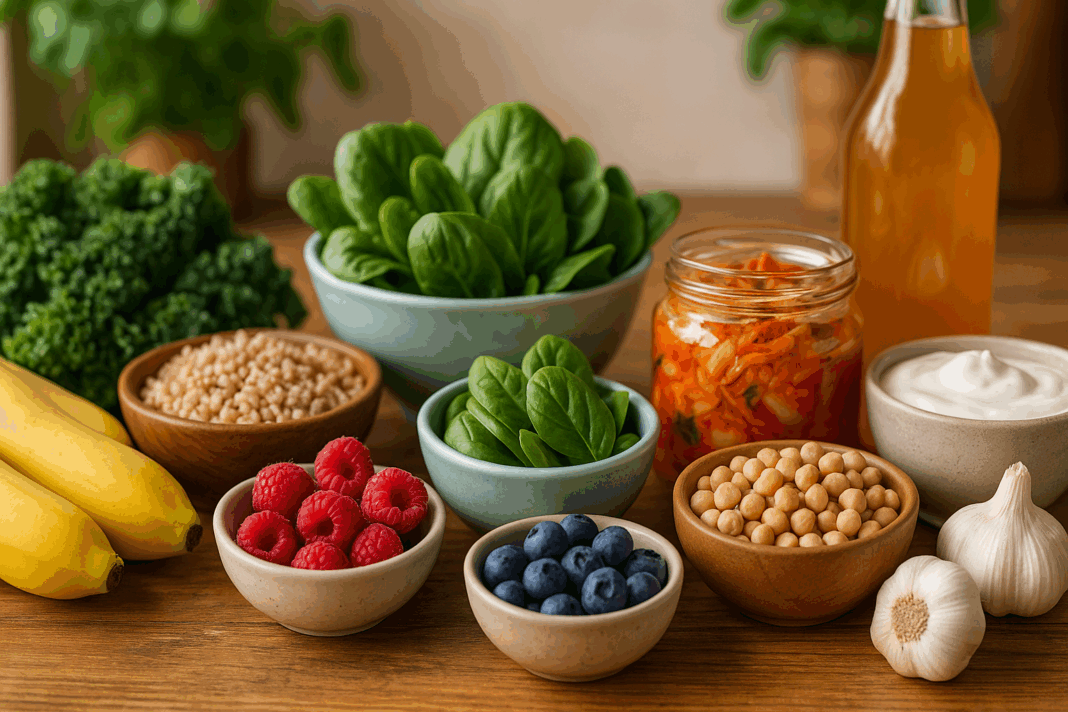A thriving digestive system is central to our overall health, and the key to nurturing it lies in understanding the best foods for healthy gut flora. These beneficial microorganisms—collectively referred to as the gut microbiota—play a pivotal role in regulating digestion, supporting immunity, modulating mood, and even influencing metabolic processes. The foods we choose to eat can dramatically shift the balance of this complex ecosystem, either promoting the proliferation of good intestinal bacteria or encouraging the growth of harmful microbes. In this comprehensive guide, we’ll explore how nutrition shapes our gut microbiome, what foods enhance or hinder its health, and how to create sustainable habits that nourish your digestive tract for long-term well-being.
You may also like: The Ultimate Guide to Gut Healthy Meals: Best Meals for Gut Health and Nourishing Recipes You’ll Love
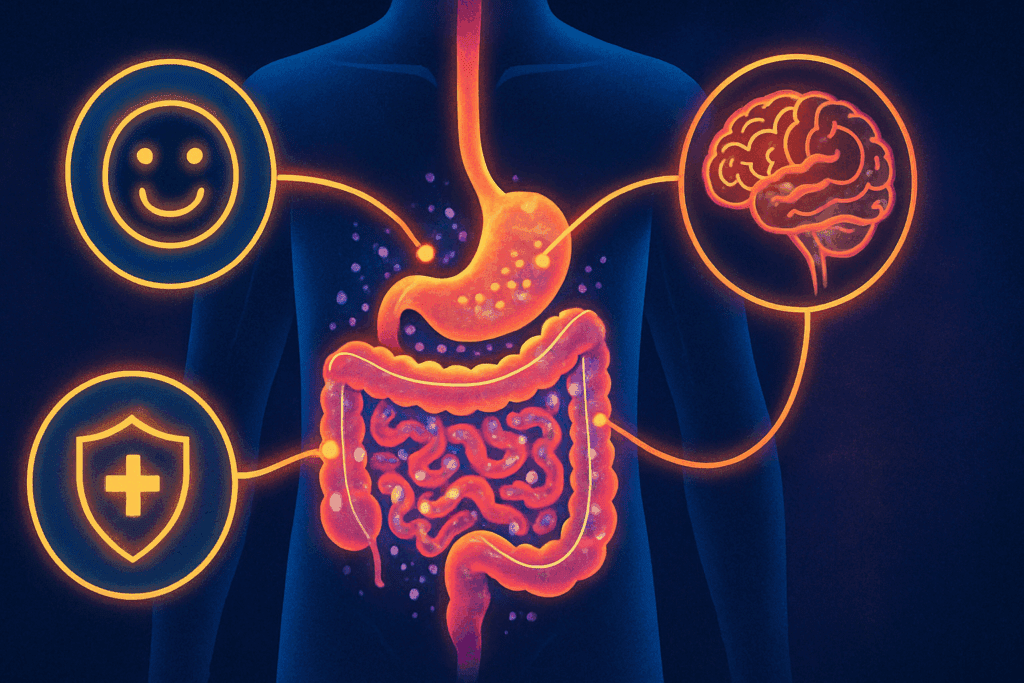
Why Gut Health Matters More Than You Think
Recent scientific breakthroughs have redefined the gut as a dynamic “second brain,” highlighting its far-reaching influence over both physical and mental health. Beyond simply digesting food, the gut serves as a hub for immune function and hormone regulation. Over 70% of the immune system resides within the gut lining, where it responds to dietary inputs and microbial signals. Meanwhile, a well-balanced microbiome produces short-chain fatty acids, neurotransmitters like serotonin, and other compounds that support cognitive function and mood stability. When gut flora becomes imbalanced—often due to poor diet, stress, or medication—individuals may experience a cascade of health problems including bloating, fatigue, anxiety, food sensitivities, and chronic inflammation. Therefore, nourishing the gut isn’t a fringe wellness trend but a critical investment in long-term health.
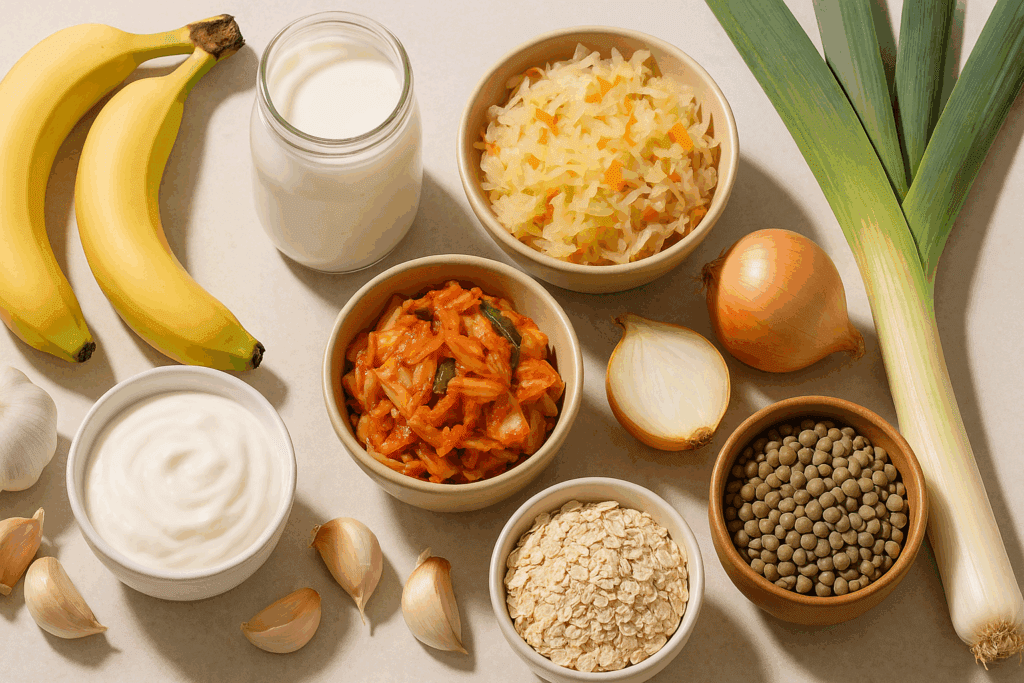
The Science Behind Good Intestinal Bacteria Foods
To understand why certain foods are better than others for your microbiome, it’s essential to grasp how gut bacteria interact with what you eat. Prebiotics—found in fibrous plant foods—are essentially food for beneficial bacteria, enabling them to flourish and crowd out less desirable strains. Probiotics, on the other hand, are live microorganisms present in fermented foods that can bolster the diversity of your gut ecosystem. Synbiotics combine both, offering a one-two punch for microbial health. Scientific studies consistently show that individuals who consume a varied, plant-rich diet tend to have more diverse and resilient gut flora than those whose meals rely heavily on processed foods, sugars, and red meat. As we delve into the top 10 foods for gut health, remember that the most effective dietary strategies support microbial diversity and stability over time.
Top 10 Foods for Gut Health: What the Research Says
While no single food can single-handedly transform your gut microbiome, certain staples stand out for their profound effects on microbial balance. Yogurt, for instance, is one of the best foods for microbiome health due to its abundance of Lactobacillus strains that aid digestion and strengthen the intestinal barrier. Similarly, kefir—a fermented dairy beverage—offers a broader spectrum of probiotic cultures and is often better tolerated by individuals with lactose sensitivity. Sauerkraut and kimchi provide both lactic acid bacteria and fiber, making them excellent dual-action choices.
In the realm of plant-based options, garlic, onions, and leeks are rich in inulin, a prebiotic fiber that stimulates the growth of bifidobacteria. Bananas, especially when slightly green, provide resistant starch that ferments in the colon, nourishing healthy bacteria. Berries, known for their antioxidant content, also promote microbial diversity. Whole grains like oats and barley introduce beta-glucans and other fermentable fibers that feed good gut microbes. Legumes such as lentils and chickpeas offer a triple benefit: protein, prebiotic fiber, and slow-digesting carbohydrates that support metabolic health.
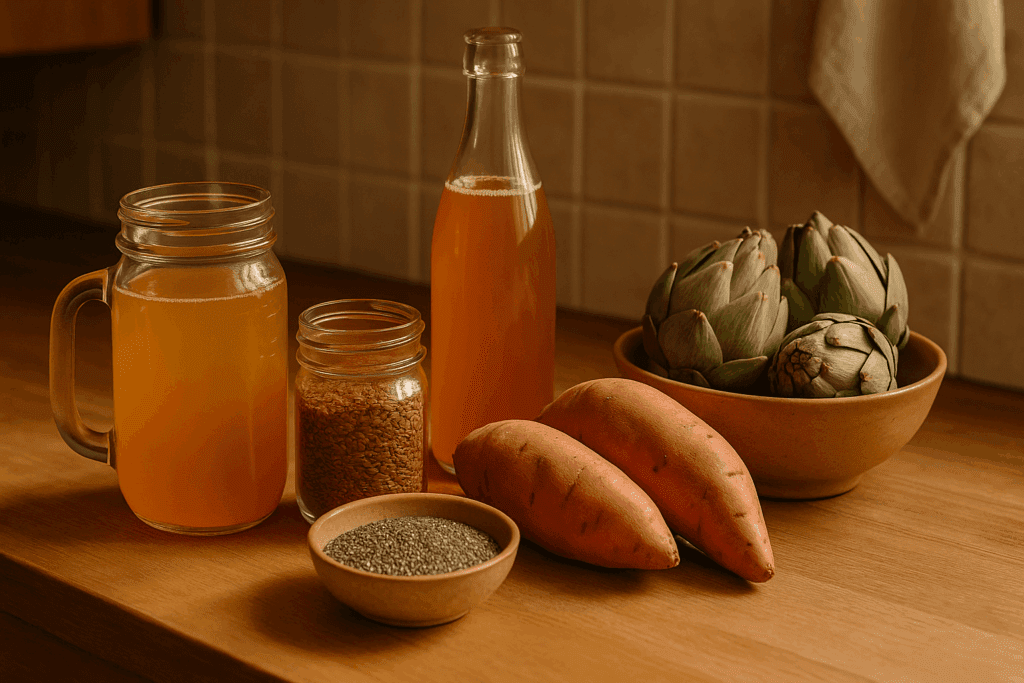
The Best Foods for Healthy Gut Flora and Immune Resilience
Among the best foods for healthy gut flora are those that not only enhance digestion but also support immune function. One compelling example is miso, a traditional Japanese paste made from fermented soybeans. Miso is rich in isoflavones and enzymes that modulate immune responses and stabilize gut flora. Tempeh, another fermented soy product, offers a complete protein along with probiotics and prebiotic fibers.
Leafy greens such as spinach, kale, and arugula contain sulfoquinovose, a sugar molecule that specifically feeds beneficial bacteria in the gut. Seaweed, although less commonly consumed in Western diets, provides polysaccharides that resist digestion in the upper GI tract, reaching the colon intact to support microbial fermentation. These foods exemplify how immune and gut health are deeply interconnected, as a diverse and thriving microbiota equips the body to fend off pathogens and maintain balance.
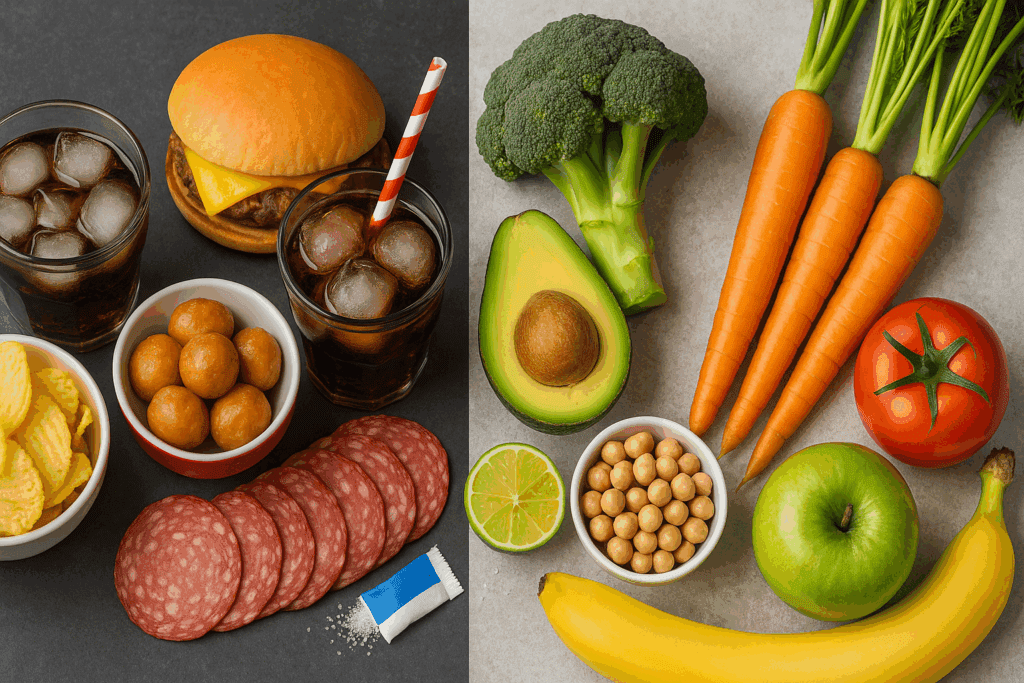
What Foods to Eat to Restore Gut Microbiome After Disruption
Life circumstances—whether it’s a course of antibiotics, a period of stress, or dietary upheaval—can disrupt the gut microbiome, reducing its diversity and impairing its function. Fortunately, targeted dietary interventions can accelerate recovery and restore microbial harmony. The best foods to restore gut health include fermented items like kombucha and yogurt, as well as fiber-rich vegetables such as asparagus, artichokes, and sweet potatoes.
Bone broth, while not a probiotic, contains collagen and glutamine that help repair the intestinal lining. Flaxseeds and chia seeds add mucilaginous fiber that soothes inflamed tissue and feeds healthy bacteria. Reintroducing polyphenol-rich foods—such as pomegranates, green tea, and cocoa—can also facilitate microbial rebalance by encouraging the growth of anti-inflammatory bacteria. Importantly, restoration is a process, not a quick fix; consistency in dietary choices plays a pivotal role in gut recovery.
Understanding Foods Bad for Gut Health and Why They Matter
Just as certain foods promote a thriving gut ecosystem, others can cause considerable harm. Diets high in refined sugars and saturated fats tend to foster the growth of pathogenic bacteria, leading to dysbiosis—a state of microbial imbalance. Artificial sweeteners, particularly sucralose and saccharin, have been shown to disrupt gut microbial communities and may impair glucose tolerance over time. Similarly, excessive alcohol consumption alters bacterial ratios and damages the intestinal lining.
Highly processed foods, often devoid of fiber and loaded with preservatives, not only starve beneficial bacteria but also introduce additives that may trigger inflammation. Red meat, when consumed in large amounts, increases the presence of bile-tolerant bacteria that have been linked to inflammatory conditions. To preserve gut health, it’s crucial to minimize these items and opt instead for nutrient-dense alternatives that support microbial resilience.

The Best Foods to Heal Your Gut After Inflammation or Illness
Chronic inflammation, whether from autoimmune conditions, infections, or poor dietary habits, can impair gut function and compromise the integrity of the intestinal lining. The best foods to heal your gut in such cases are those that offer anti-inflammatory, mucosal-protective, and regenerative properties. Bone broth, again, serves as a cornerstone in gut-healing protocols, delivering key amino acids like glycine and proline that support tissue repair.
Cooked vegetables—particularly squash, carrots, and zucchini—are easier to digest and less likely to irritate a compromised gut. Fermented foods, when tolerated, introduce probiotics that outcompete harmful bacteria and reduce inflammation. Omega-3-rich foods such as salmon, walnuts, and chia seeds help quell systemic inflammation and improve intestinal permeability. Rebuilding a healthy gut after illness is a nuanced endeavor, requiring patience and a steady intake of foods good for gut flora and overall digestive wellness.
Nutrition and Gut Health: Creating a Long-Term Strategy
Sustaining a healthy gut is not about adhering to rigid rules or following fad diets; it’s about cultivating a holistic nutritional philosophy rooted in variety, balance, and mindfulness. The relationship between nutrition and gut health is bidirectional: what we eat affects our microbes, and in turn, our microbes influence how we absorb and utilize nutrients. Fiber, for example, not only feeds gut bacteria but also slows glucose absorption, enhances satiety, and supports regularity.
To create a resilient microbiome, aim for a diet rich in plant diversity—think of eating the rainbow as not just a visual goal but a microbial one. Fermented foods should be incorporated regularly, and high-quality fats from nuts, seeds, and oily fish can support gut integrity. Rotating food choices prevents microbial monotony and encourages broader species richness. Lastly, staying hydrated, managing stress, and maintaining regular sleep patterns round out the lifestyle practices that anchor digestive health.

Best Foods for Gut Health and Weight Loss: Is There a Link?
The growing body of research on the gut microbiome has shed light on its potential role in weight management and metabolic health. While the relationship is complex, evidence suggests that a diet rich in the best foods for gut health and weight loss can positively influence energy balance, reduce inflammation, and improve insulin sensitivity. High-fiber foods like legumes, berries, and whole grains promote satiety and reduce overall caloric intake by slowing digestion and prolonging fullness.
Additionally, certain bacteria in the gut are more efficient at extracting energy from food, and dietary interventions can help modulate these populations. For example, increasing the intake of foods good for gut flora—such as inulin-rich vegetables and fermented products—can shift the microbial balance toward species associated with leanness. It’s important to note that while dietary changes alone are not a panacea for weight loss, they are a foundational strategy that complements other lifestyle interventions.
Best Foods for Healthy Gut Flora During Life Transitions
Periods of physiological or lifestyle change—such as pregnancy, aging, or intense physical training—can place unique demands on the digestive system. During these times, paying attention to gut health becomes even more essential. For pregnant individuals, the microbiome plays a role in immune programming and nutrient absorption, making probiotic-rich foods like yogurt and kefir valuable additions to the diet.
Older adults often experience reduced microbial diversity and slower gut motility. Introducing prebiotic fibers from sources like oats, bananas, and asparagus can stimulate beneficial strains and support regular digestion. Athletes undergoing rigorous training may face increased gut permeability and inflammation; fermented foods, polyphenols, and collagen-rich broths can mitigate these effects and promote recovery. Life transitions are ideal opportunities to reinforce habits that maintain a balanced gut environment.
Best Foods for Microbiome Diversity and Resilience
Microbial diversity is a hallmark of a healthy gut, and diversity is nurtured through dietary variation. The best foods for microbiome diversity include a wide array of fibrous fruits, vegetables, whole grains, and legumes, each offering different substrates for bacterial fermentation. For example, apples provide pectin, a unique fiber that supports butyrate-producing bacteria, while legumes contribute resistant starch that nourishes bifidobacteria.
Adding lesser-known items such as Jerusalem artichokes, sunchokes, or seaweed can further enrich the microbial landscape. Polyphenol-rich foods—like green tea, dark chocolate, and red grapes—act as prebiotic agents that modulate bacterial expression. Consistently rotating your diet, even within food categories, helps introduce novel compounds that different microbial species can utilize, ensuring that no single group dominates. This not only enhances resilience but also fosters a gut environment equipped to handle stress, illness, and dietary changes.
Best Foods for Healthy Gut Flora and Sustainable Wellness
At the heart of long-term digestive health is consistency—building a diet around the best foods for healthy gut flora and maintaining those choices as part of a broader wellness framework. Foods that contribute to microbial balance, immune support, and anti-inflammatory action offer compounding benefits when consumed regularly. For example, a daily serving of sauerkraut or kimchi introduces a steady stream of live cultures, while rotating fibrous vegetables sustains prebiotic supply.
Meal timing and mindfulness also play a role in gut function. Eating slowly, chewing thoroughly, and avoiding distractions during meals can enhance digestion and microbial processing. Planning meals with balance—incorporating proteins, healthy fats, fermentable fibers, and polyphenols—creates a stable environment for beneficial bacteria to thrive. This sustainable approach to nutrition is not only accessible but transformative, supporting gut health across all stages of life.
Frequently Asked Questions: Best Foods for Healthy Gut Flora and Digestive Wellness
What are some surprising sources of prebiotics beyond the common choices?
While most people associate prebiotics with familiar vegetables like onions and garlic, there are several lesser-known yet potent sources worth exploring. Chicory root, for instance, is one of the richest natural sources of inulin, a prebiotic fiber that enhances the activity of good intestinal bacteria. Dandelion greens, often overlooked as a weed, also pack a prebiotic punch while delivering vitamins A and K. Green bananas and plantains provide resistant starch that feeds beneficial gut microbes more effectively than ripe bananas. Even cocoa, particularly in its raw or dark form, contains polyphenols that serve as food for healthy gut microbes, encouraging microbial diversity and intestinal harmony.
How do travel and changes in environment affect gut health, and what can you eat to stay balanced?
Travel disrupts routines, diet, and even circadian rhythms—all of which can stress the digestive system and impact gut flora. One proactive approach involves packing portable fermented foods such as shelf-stable sauerkraut or travel-friendly probiotic capsules. Staying hydrated is critical, as dehydration can affect bowel regularity and microbial transport. Incorporating high-fiber snacks like roasted chickpeas or dried seaweed can help maintain continuity in your dietary intake of foods good for gut flora. When dining out, opt for meals that feature legumes, leafy greens, or pickled vegetables, all of which contribute to the best foods for microbiome support while away from home.
Why do some people experience bloating when increasing fiber-rich foods, and how can they adjust?
Bloating from increased fiber intake usually stems from a sudden surge in fermentable carbohydrates that the gut flora isn’t yet adapted to process efficiently. The key to avoiding discomfort is gradual incorporation—starting with small servings of foods good for gut flora, such as oats, lentils, and asparagus, then slowly increasing volume. Chewing thoroughly and eating mindfully also supports smoother digestion by aiding enzymatic breakdown. Soaking beans and grains before cooking can reduce certain oligosaccharides responsible for gas production. Over time, the gut adapts by increasing microbial populations that specialize in breaking down fiber, ultimately improving tolerance and digestive efficiency.
Are there best practices for combining probiotic and prebiotic foods for enhanced benefit?
Yes, strategically pairing probiotic and prebiotic foods—known as synbiotic eating—can magnify gut health benefits. For instance, combining yogurt (a probiotic) with berries and flaxseed (prebiotics) offers a synergistic effect that supports both the introduction and nourishment of good intestinal bacteria. A stir-fry made with tempeh, garlic, and asparagus can also serve as a powerful microbiome-boosting meal. Timing matters as well; consuming prebiotics earlier in the day may prime the gut to receive probiotics more effectively later. Rotating your sources, rather than sticking to a single pairing, ensures diverse strains are supported. This method is particularly effective for individuals aiming to identify the best foods for healthy gut flora with sustainable long-term results.
What are the social and psychological implications of poor gut health?
Emerging research highlights that the gut-brain axis—an intricate communication network between the digestive system and the central nervous system—plays a significant role in mental well-being. Dysbiosis, or an imbalance in gut flora, has been linked to anxiety, depression, and even impaired cognition. Socially, these symptoms may contribute to withdrawal, low energy, or irritability, affecting personal and professional relationships. Including top 10 foods for gut health such as fermented vegetables, leafy greens, and legumes can help restore microbial balance and alleviate some of these mood-related concerns. Addressing nutrition and gut health holistically can support both emotional resilience and improved social engagement.
Can fermented foods alone restore a disrupted microbiome?
While fermented foods are valuable contributors to gut health, relying solely on them to restore a disrupted microbiome may not be sufficient. Fermented products like kimchi, kombucha, and kefir introduce beneficial strains, but a diverse and resilient microbiome depends on a broad spectrum of inputs. A more effective strategy includes pairing probiotics with fiber-rich vegetables, omega-3 fatty acids, and polyphenol-containing fruits for a comprehensive approach. Also important is consistency—short-term inclusion of fermented foods offers transient benefits, while long-term dietary patterns dictate microbial permanence. Ultimately, the best foods to restore gut health include both fermented and whole plant-based options to maximize microbial stability.
What are the best foods for healthy gut flora during high-stress periods?
Stress can negatively influence the gut through hormonal shifts that alter microbial composition and increase intestinal permeability. During high-stress times, it’s essential to prioritize calming, anti-inflammatory foods that double as microbial allies. Fatty fish like salmon and sardines offer omega-3s that reduce inflammation and support the gut-brain axis. Root vegetables such as carrots, beets, and sweet potatoes provide fiber that stabilizes digestion and blood sugar. Fermented dairy, when tolerated, helps reintroduce beneficial microbes. For those under chronic stress, the best foods for healthy gut flora also include adaptogenic herbs like ashwagandha, which may help modulate cortisol and protect gut integrity indirectly.
How do seasonal changes impact the availability and effectiveness of gut-friendly foods?
Seasonal variations influence not only the availability of foods but also their microbial diversity and nutrient profile. For example, summer yields fresh berries and leafy greens, rich in polyphenols and fermentable fibers, ideal for supporting gut flora diversity. Winter, on the other hand, may favor root vegetables and fermented foods like sauerkraut that can be preserved. Eating seasonally exposes the body to a rotating portfolio of prebiotics and probiotics, which may help prevent microbial stagnation. Additionally, foods grown locally in their native season often contain more viable compounds, making them superior choices among the best foods for gut flora throughout the year. Planning meals around seasonal produce offers both practical and microbiological advantages.
Are there specific gut-friendly foods that support athletic performance and recovery?
Yes, certain gut-friendly foods also aid in physical performance and recovery. Tart cherries and pomegranates are not only rich in polyphenols but also help reduce exercise-induced inflammation. Greek yogurt and cottage cheese provide probiotics and protein, supporting muscle repair and microbial balance. Legumes, especially lentils and black beans, offer complex carbohydrates and fiber that promote endurance and feed good intestinal bacteria. Hydrating foods like cucumber and watermelon support electrolyte balance while aiding digestion. For athletes, aligning recovery nutrition with the best foods for gut health and weight loss offers dual benefits: enhanced performance and improved digestive resilience.
What are some commonly misunderstood foods that are actually bad for gut health?
Some foods marketed as healthful can be misleading when it comes to gut wellness. For instance, protein bars often contain sugar alcohols and artificial sweeteners that disrupt gut microbial populations. Gluten-free packaged goods may lack fiber and include preservatives that harm beneficial bacteria. Excessive fruit juice consumption, despite its vitamin content, delivers high fructose loads without the fiber necessary to buffer microbial impact. Overuse of antibacterial mouthwash can also affect oral microbiota, which serves as the first line of microbial defense for the gut. Understanding which foods to avoid for gut health can help refine dietary choices and foster more accurate perceptions of what constitutes a gut-friendly lifestyle.
Conclusion: Practical Takeaways for Gut-Conscious Living
Building a sustainable strategy for gut health means staying attuned to how seasonal shifts, lifestyle changes, and stressors affect your digestive ecosystem. Instead of relying on one-size-fits-all lists, aim to create a personal inventory of the best foods to heal your gut based on tolerance, availability, and diversity. Integrate fermented items, colorful produce, and minimally processed whole foods to enrich your microbial environment. Remember that nutrition and gut health are not static—they evolve with your habits, environment, and needs. By understanding and implementing the best foods for healthy gut flora at every stage of life, you empower your body to thrive from the inside out.

